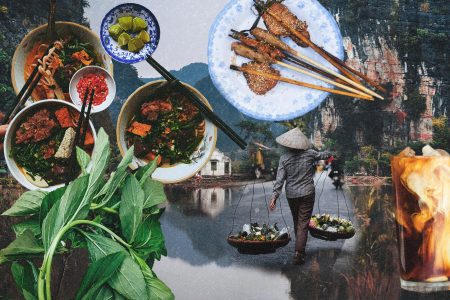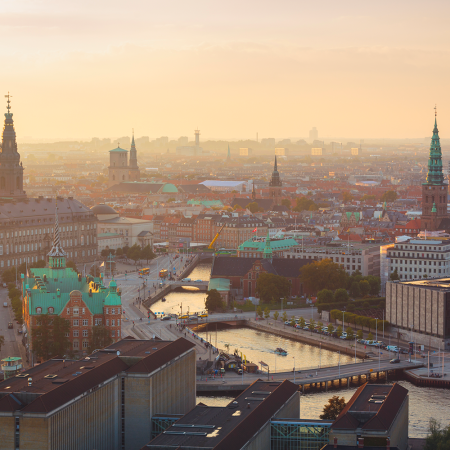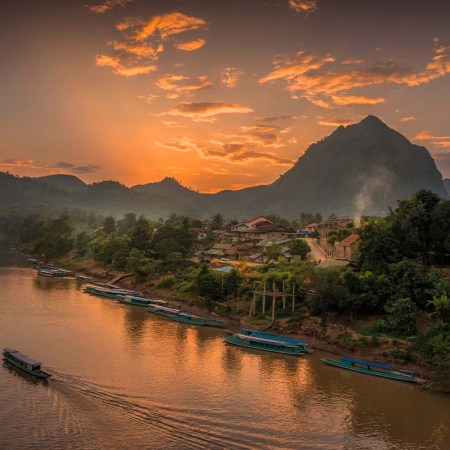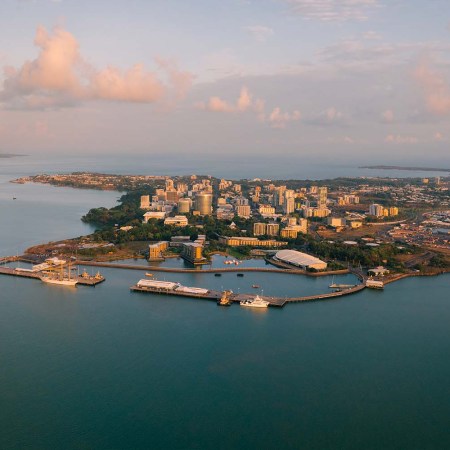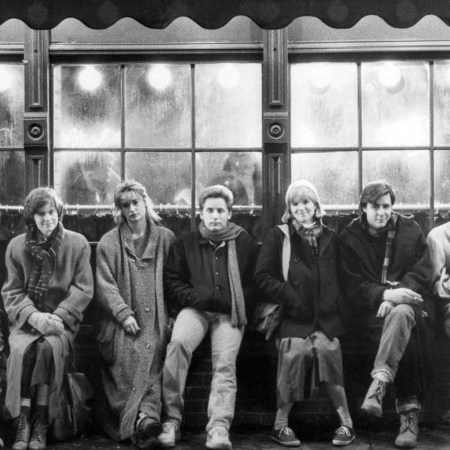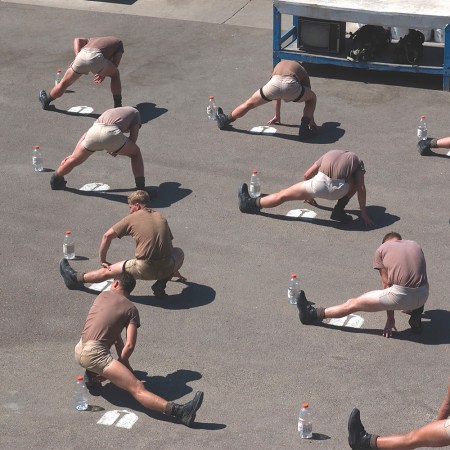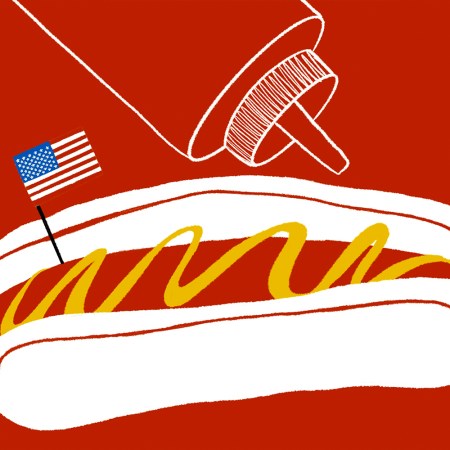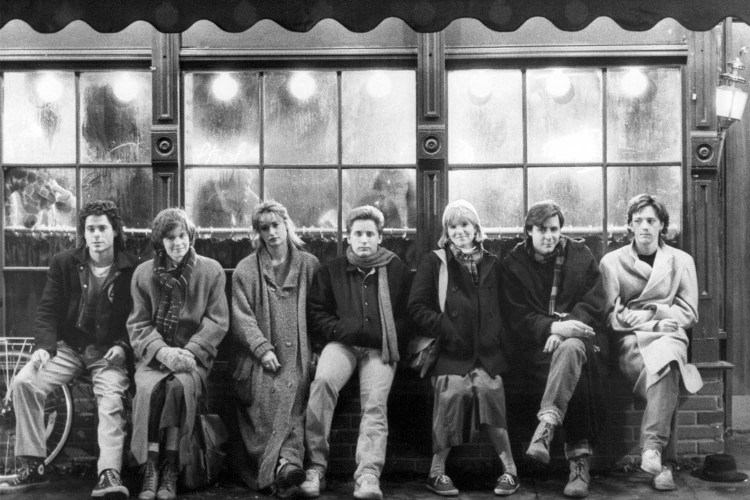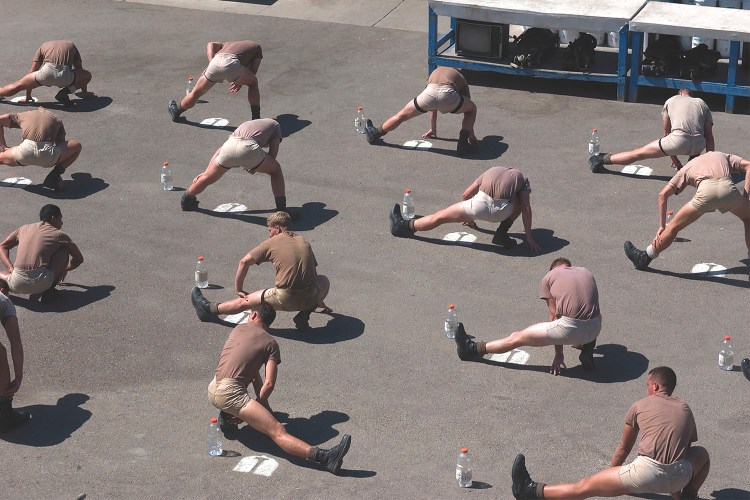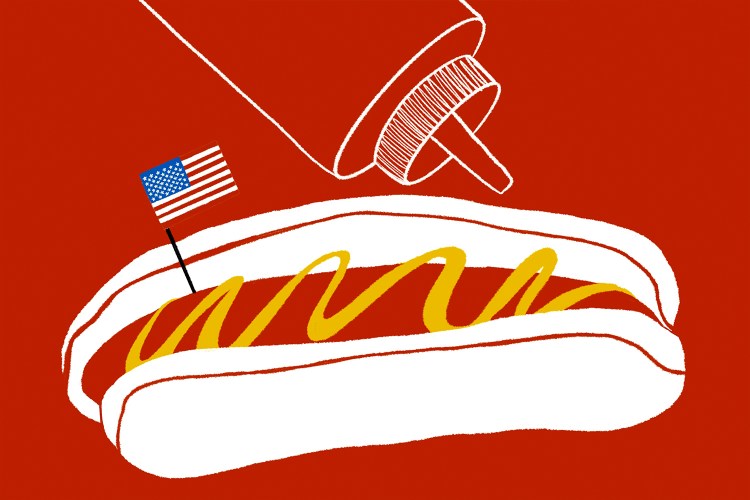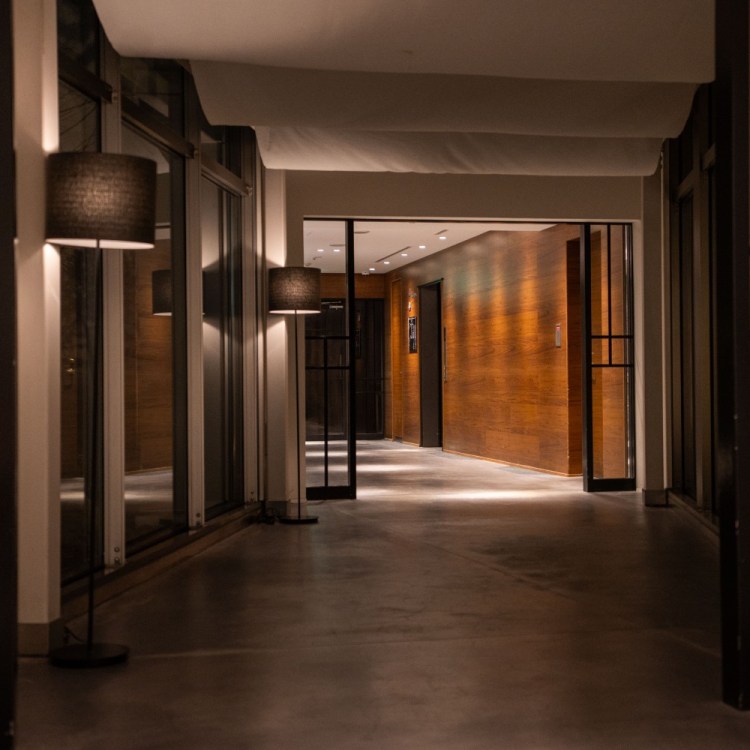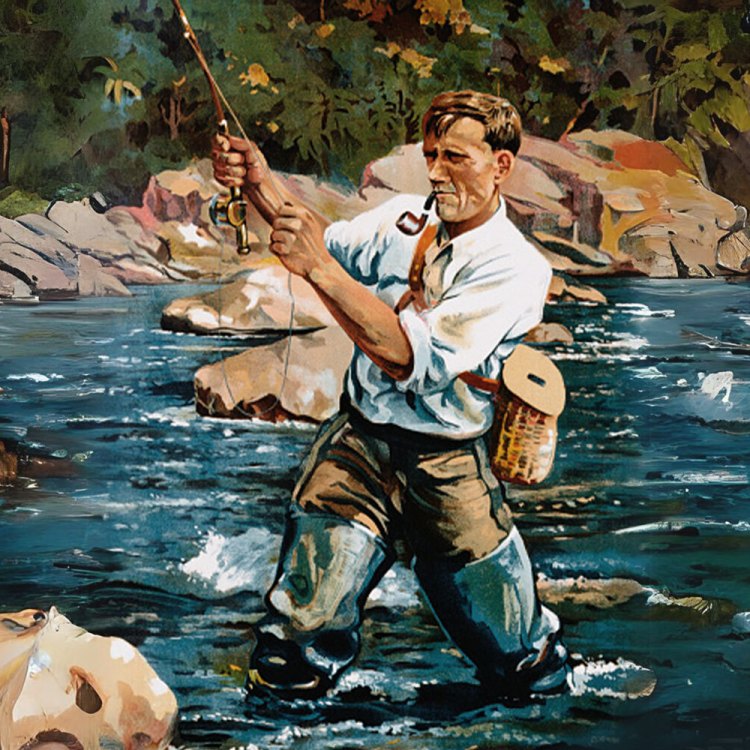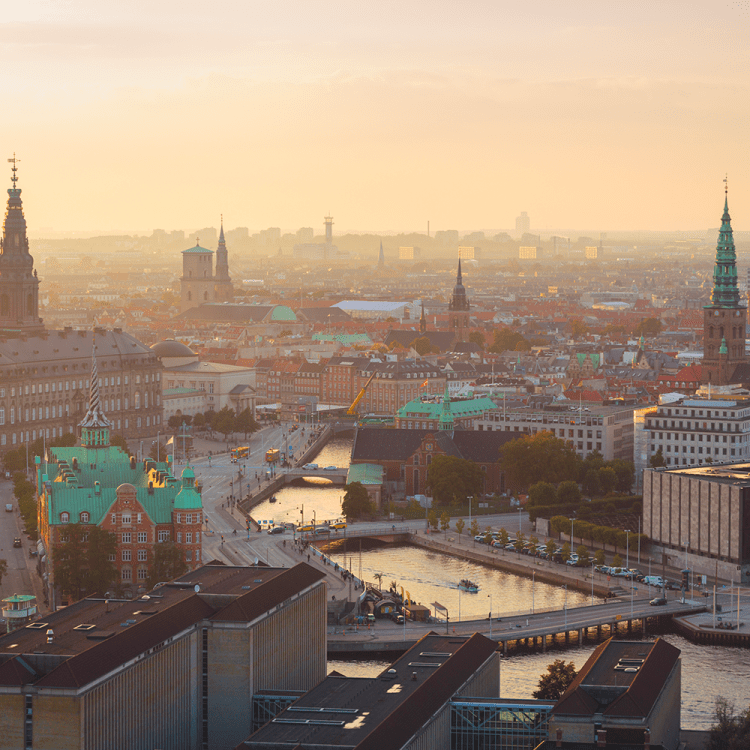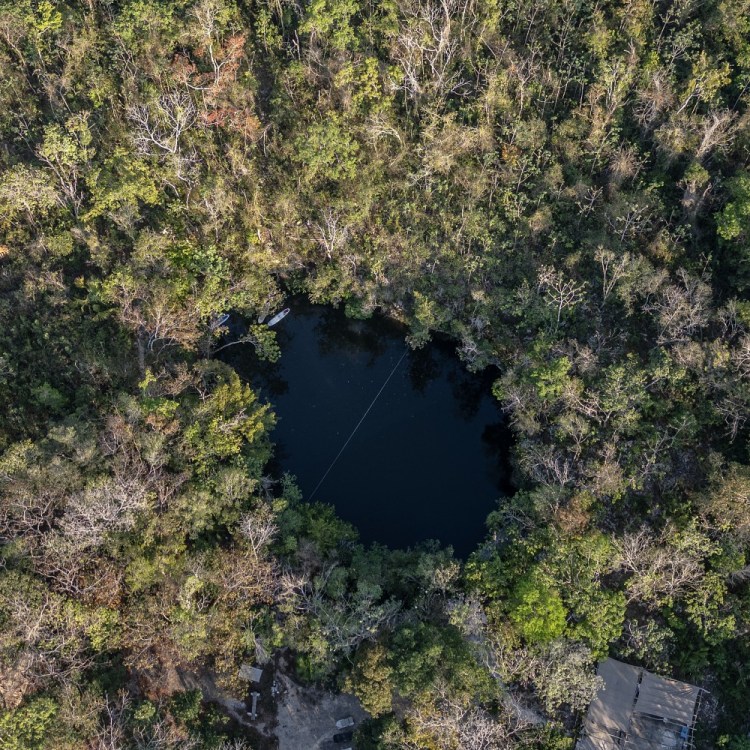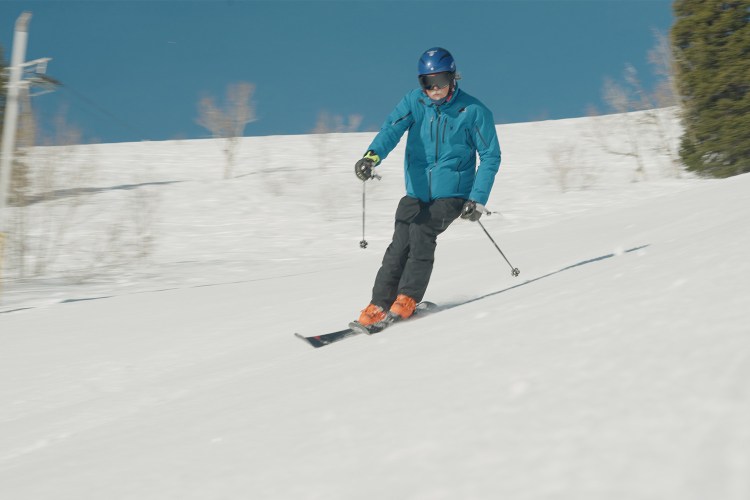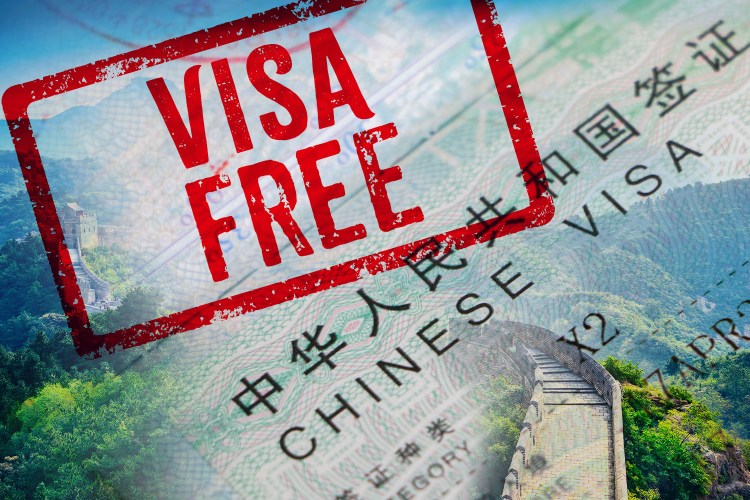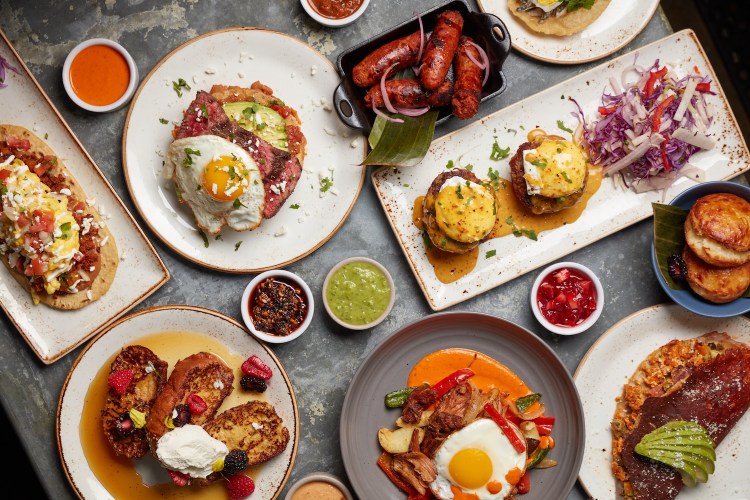While trips to Vietnam often follow a well-blazed trail between Hanoi and Ho Chi Minh City, the captivating Southeast Asian country wows with ancient towns, natural wonders, lively markets, historic attractions and palm-fringed islands. You could spend months meandering between hill stations in the north to the waterways of the Mekong Delta in the south, but it’s still possible to pack plenty into a week — think exploring fast-paced capital Hanoi, followed by a boutique cruise on Hạlong Bay and hiking Vietnam’s tallest peak to getting pampered at the country’s first all-spa inclusive resort on its laid-back central coast. A top choice for intrepid travelers, here’s how to spend seven perfect days in North and Central Vietnam.
When to Go:
Between April and June are considered the best months to visit, when tropical downpours have eased up in Hanoi and temperatures will be pleasant rather than stiflingly humid. Springtime visits to mountain town Sapa in the northwest mean optimum trekking conditions, while March to August is a sweet time for central coast beach vacations with warm days and mellow waves.
Pro tip: Taxi scams in Vietnam are not unheard of, and if your language skills are less than stellar, download Grab (the Southeast Asian Uber equivalent) for affordable and hassle-free rides by car and moped around major cities, including airport drop-offs and pick-ups.

Day 1:

Stay: A fixture in the capital since 1901, Sofitel Legend Metropole Hanoi has hosted a glittering who’s who of A-list actors, ambassadors and heads of state. The hotel is divided into two wings: the Opera building skews classic contemporary, while the historic Metropole wing recently reopened after a year-long renovation. An updated blend of French colonial décor and Vietnamese influences spans its rooms and suites, including those named after famous former guests, like novelist Graham Green who stayed in 1951 while working for Paris Match. Several destination dining venues, an elegant spa, private garden and outdoor swimming pool have cemented its place among the hearts of discerning travelers and well-heeled Hanoians alike.

Explore: Ideally located a short walk from Hanoi’s historic Old Quarter means this bustling maze of 36 narrow streets — where shophouses, street food stalls, funky stores and temples all jostle for space — can easily be explored on foot from the hotel. But first a note about the organized chaos of Hanoi where sidewalks double as moped parking lots and crossing the road is like playing Frogger: step out with confidence and conviction. Begin at Hoan Kiem Lake and cross the iconic red bridge to Ngoc Son Temple, then catch a show at the Thang Long Water Puppet Theater before wandering down hidden alleys lined with pavement bars and quaint cafes where you can fuel up with an egg coffee (Robusta coffee topped with a whisked egg and a condensed milk-based foamy custard) or banh mi stuffed with paté.

Do: The Path of History Tour at Metropole Hanoi offers fascinating insights into the city and hotel itself and includes a visit to an underground bunker where Joan Baez and Jane Fonda sheltered from air raids during the American War. The tour culminates with a drink in the poolside Bamboo Bar, where the pavilion-style thatched roof lends itself well to ordering something tropical or the hotel’s signature Graham Greene Martini.

Dine: Each restaurant at the Sofitel Legend Metropole Hanoi has a unique atmosphere. For refined French cuisine with signature dishes, like beef tartare and lobster bisque, you’ll want a reservation at the “Grand Dame of 1901” Le Beaulieu. For Vietnamese cuisine, try Spice Garden; brasserie classics (salad Niçoise, steak tartare) can be enjoyed at Le Club Bar, which overlooks the garden.

Day 2:

Cruise: It’s a two-hour drive from Hanoi to Tuan Chau Harbour in Hạlong Bay where you’ll board Heritage Line Violet at 11:30 a.m. for the one night “Dragon Passage” cruise of the UNESCO World Heritage Site. Resembling a traditional Asian junk, interiors are appointed with retro Indochina-style decor and opulent silks. There are two Junior Suites on the main deck and four Imperial Suites (Dragon, Phoenix, Moon, Cloud) upstairs; each has a private balcony, floor to ceiling windows, mini bar and marble bathroom with soaking tubs. Violet might be small in size but also features a spa, separate dining room, cozy bar and sun deck with lots of loungers.
Pro tip: Heritage Line can include transfers in packages, but Hanoi Transfer Service is another option for making the two-hour drive for less at around $95 each way. During August, solo travelers should take advantage of the cruise ship company’s waived single supplement fee.

See: According to ancient legend, Halong Bay’s rocky limestone pillars were formed by dragons (“Halong” means “descending dragon” in Vietnamese) to protect the country from invasion. The karst landscape is an ethereal sight to behold, and Heritage Line does its best to find quieter areas and combo excursion stops at Halong Bay Pearl Farm, Ti Top Island, Cua Van floating fishing village and Sung Sot Cave when the larger modern-day cruise boats are elsewhere.

Eat and Drink: Sit down to a three-course lunch of traditional dishes like pho and fresh spring rolls after boarding when the Heritage Line team will make a note of your choices for dinner and breakfast. The wine and cocktail list is solid (these cost extra and will be charged to your suite), and the bartenders are happy to mix up drinks on demand. There’s also a hands-on chef cooking demo at sunset, which is a fun way to chat with other guests before dining under the stars.

Day 3:

See: Explore more of Hanoi before boarding an overnight train to Sapa. Disembarking after lunch and returning to Hanoi by private transfer means you should get there by 2 p.m., which allows a good six hours to see more of the city before taking the overnight train to Sapa. But first, leave your bags in a luggage storage locker at the Hanoi Railway Station.

See and Do: The consensus is that “Train Street” (a working railway track that cuts through a neighborhood in the heart of Hanoi’s Old Quarter) has jumped the shark, but it’s still one of the most popular tourist attractions in Hanoi, despite authorities trying to shut it down citing safety concerns. Boasting an impressive collection of hardware — from aircraft and tanks to artillery guns — and thousands of artifacts and photographs that illustrate the country’s military might, the Vietnam Military History Museum is worth a visit, as is the Temple of Literature. Founded in 1070 and dedicated to Confucius, it was the first national university in Vietnam; wandering the courtyards and gardens immerses visitors in its centuries-old history and scholarly learning.

Eat: Street food continues to be a prominent source of pride in Hanoi, but upscale and, yes, Instagrammable establishments are having a moment, too. For the latter, try Bancông Cafe & Restaurant. Tables fill up fast at MẸT Vietnamese Restaurant, and for good reason: there’s not a bad dish on the menu. Order the Vietnamese pancakes, which come with rice paper sheets to stuff with either meat or fish and hand roll. Specializing in North Vietnamese cuisine, Michelin Bib Gourmand recommended restaurant The East is the place to come for crab spring rolls and an elevated version of street food staple bún chả (grilled pork and rice noodles).

Ride: A handful of Vietnam Railway trains run between Hanoi and Lao Cai in northwestern Vietnam, but the Chapa Express Train is the most luxurious and departs every night at 10 p.m. Decorated in traditional fabrics, wood-paneled cabins come with high-speed internet, towels, welcome drinks and snacks. For couples or solo travelers happy to pay a supplement, the private suite cabin ($176) has two berths versus others which all have four. It’s so comfy that you’ll wake up wishing the overnight journey was longer so you could enjoy a bit more time on the train.
Pro tip: The train arrives in Lao Cai Station at 6 a.m., and while you can wing it with a local minibus or taxi, having a prearranged ride for the 45-minute drive to Sapa that early is way less stressful.

Day 4:

Stay: Designed by renowned architect Bill Bensley, the glamorous Hotel De La Couple – MGallery resembles an early 20th century European palace, where, among perks like access to the Wes Anderson-esque La Grand Bassin spa and swimming pool, guests also receive special WOW Pass pricing for the Mount Fansipan Cable Car. Travelers on a budget should check into Sapa Mountain Queen Hotel, a cozy 21-room boutique stay whose manager Mr. Kim can assist with everything from booking taxis and tours to dining recommendations. Both properties are located in town, so you can explore on foot rather than needing to rely on taxis to get around.

Wander: Established as a hill station by the French in 1922, Sapa’s charms have remained undiminished. Although the sole surviving landmark from that period is a little church on Quang Truong Square. Home to the Hmong people, who terrace and grow rice in the surrounding valley, the town has recently become one of the hottest tourist destinations in Vietnam. Known for their intricate embroidery and indigo batik fabrics, Hmong handicrafts make great gifts and souvenirs and can be found at local markets or boutiques like Indigo Cat Shop on Fansipan Street.

Eat: Adventurous eaters should sample traditional street food-style barbecue dishes at one of the pop-up sidewalk restaurants in Sapa where your choice of meat-on-stick, potatoes, corn, eggs or sticky rice can be grilled fresh to order. If a cozy sit down place for delicious Vietnamese and French-inspired dishes and great drinks appeals more, try Saparis Eatery & Cocktail Bar, a short walk from the town square. And if it’s stunning views you crave, head to the elegant Sapa Sky View Restaurant & Bar where the menu spans Western and Vietnamese cuisine.
Pro tip: There are several outdoor stores around Sapa selling great quality knockoff gear and accessories (day packs, trekking poles, hiking boots) at super reasonable prices (expect to pay $25 for a pair of shoes) if you forgot something or would rather keep those travel kicks clean.
The Top 10 Foods to Eat in Vietnam and Where to Find Them
An exploration of the best regional dishes and local eats in Vietnam
Day 5:

Hike: Hmong-owned outfitter Sapa Sisters have led guided treks in the mountains around Sapa since 2009 and regularly combine multi-day trips with local homestays, but their landmark experience is hiking to the “Roof to Indochina.” Sitting at 10,312 feet, Mount Fansipan is a real mountain (the highest in Vietnam), albeit one that can be conquered without equipment (although making the almost 15 mile trek with a guide is recommended). Plan for a 6 a.m. pick up and short drive to the Tram Ton Pass (Heaven’s Gate) ranger station where an easy stroll through bamboo and old tree forests soon gives way to an increasingly steep climb along a series of ridge lines. There’s a brief lunch stop before making the final push to the summit, reached only after navigating 600 stairs through a series of spiritual attractions in the Buddhist monastery and temple complex, which makes it feel like the end of a mythical six hour Monkey Magic quest. Even on an overcast day, panoramic views of the Hoang Lien Son Range and Muong Hoa Valley from the peak are pretty incredible — much like the sense of accomplishment for making it to the top.
Next ride the cable car back down the mountain, grab the bags and hop in a pre-arranged private transfer to Noi Bai International Airport in time to catch the 8 p.m. Vietnam Airlines ($60 economy, $147 business) flight down to Da Nang, a laidback beachfront city on the country’s tropical central coast where you can check into — and bliss out at — Vietnam’s first all-spa inclusive resort.
Pro tip: For those with more time or tighter budgets, the 7 a.m. and 3 p.m. Sapa Express business class buses to Hanoi (book ahead, as the 28- and 18-seaters fill up fast) also stop at the airport.

Stay: Set among tropical gardens and taking design cues from an imperial palace in ancient capital Huế, TIA Wellness Resort is a sleek all-villa property framed by palm trees and the South China Sea where guests split time between the wellness center and beachfront-adjacent infinity pool.

Day 6:

Chill Out: Thanks to its spa-inclusive concept, pampering is practically mandatory at TIA, whose rate includes two daily wellness treatments (sound healing sessions, facials and a steam-sauna-ice hydro circuit) per guest. Daily group classes (yoga, breathwork, tai chi) are options, too. Located on a quiet stretch of My Khe Beach 10 minutes from downtown Da Nang, you can balance chilling at the spa with downtime in your villa — each one has private courtyard and plunge pool.
All the spa therapists are reiki-trained, which means your chakras will be balanced no matter which treatments you choose, but the bamboo roll out massage, crystal wand reflexology and master reiki sessions are particularly stellar. Also recommended: floating slowly back to earth beside the meditative waterfall pool with a pot of tea in the central spa garden.

Dine: With an “eat light, feel bright” approach to menus that feature traditional Vietnamese dishes and several plant-based options, dining at TIA is health-forward but with room to indulge in the odd burger or banh mi and glass of biodynamic wine. Lunch poolside at The Ocean Bistro (salads, power snacks) and save dinner for sleek main restaurant The Dining Room.

Day 7:

Do: One of the resort’s Signature Wellness Tours is a guided early morning meditation at the Lady Buddha inside the Linh Ung Pagoda Buddhist temple. The tallest of its kind in Vietnam, Lady Buddha is a 220-foot vision in white marble, said to bestow local fishermen with good fortune among the waves. Arriving at 6 a.m. means beating the crowds and having the spiritual site on the picturesque Son Tra Peninsula — whose impressive entrance gate opens into a serene Buddha-filled statue garden that in turn leads to the main hall — practically all to yourself.

Explore: Take the 4 p.m. guest shuttle to Hội An and wander around its beautifully preserved Old Town, shopping the night market and soaking in the sights as daylight fades and thousands of colorful lanterns light up the streets. Once a major port, its most famous symbol was introduced by Chinese and Japanese merchants when they came to trade in the late 14th century. First constructed in the 1590s, the Japanese Covered Bridge here is a huge draw, too, but during the Lantern Festival (held every full moon), it gets packed with a ridiculous crush of selfie-taking tourists. It’s said that lighting and releasing a lotus flower lantern on the river can bring health, happiness and good fortune, but if nothing else, it’s a fun thing to do and looks super pretty.
Pro tip: Hội An is a haven for custom-made clothing, which can often be made within 24 hours. Prices are reasonable, although be prepared to negotiate. Home to more than 500 tailor shops, reputable names include BeBe, Yaly Couture and Lana Tailoring. For ready-to-wear pieces in organic cotton and mulberry silk, homegrown brand Metsieko has a boutique on Tran Phu street.

Eat and Drink: Hội An is a culinary hotspot, and one of the best ways to soak everything in is by making a beeline for one of the riverside restaurants with an upstairs terrace so you can people watch while sampling regional delicacies unique to the town — think bánh vac or “white rose,” a light shrimp dumpling topped with crispy onions, and bánh xèo, savory fried pancakes with different fillings. Cargo Club is a great option and has an ice cream shop, too. Across the river at Mango Mango, dine on Vietnamese-Japanese fusion dishes by sushi-loving celeb chef-owner Duc Tran.
This article was featured in the InsideHook newsletter. Sign up now.

